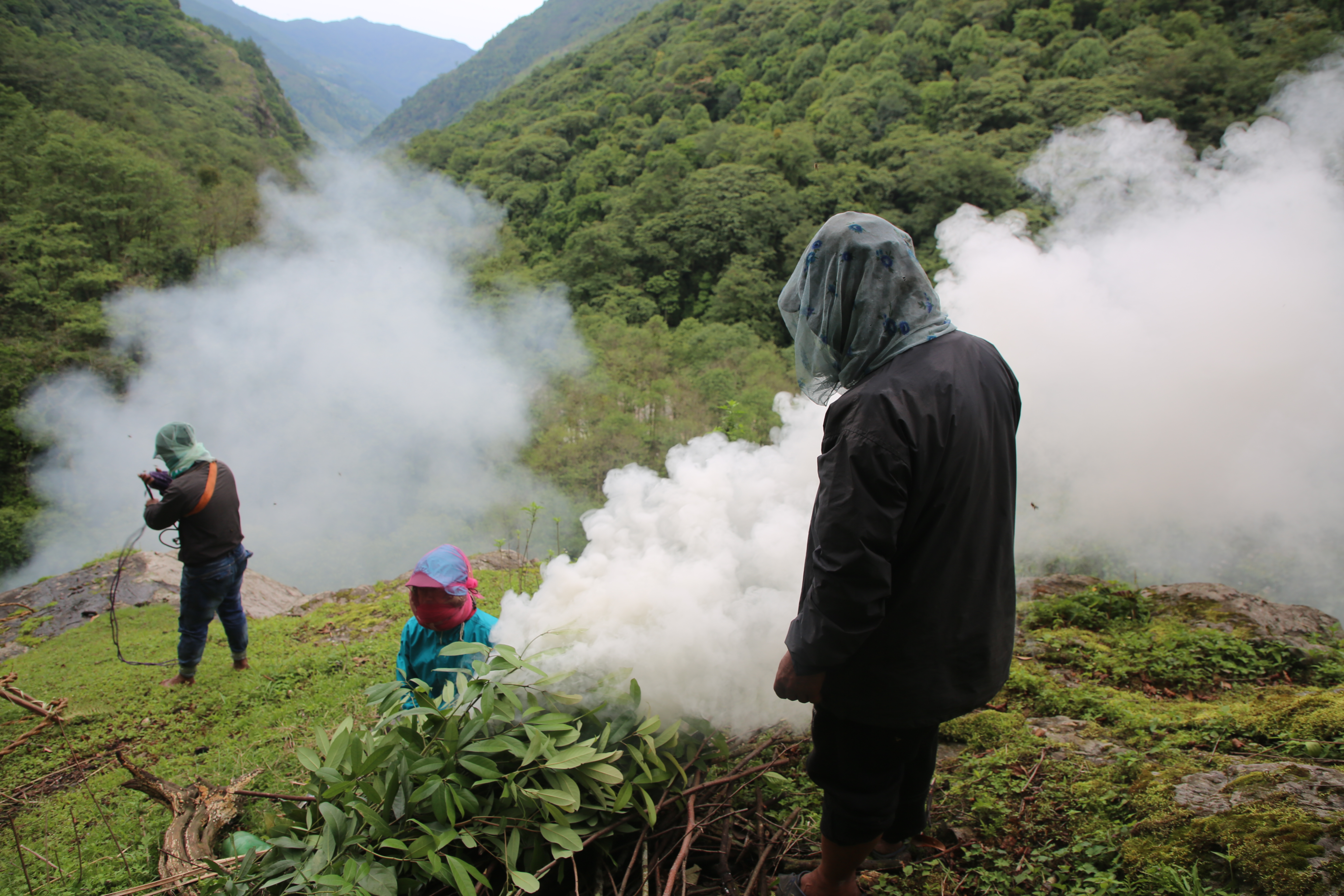For an average, occasional consumer of honey, ‘mad honey’ may sound a little weird. For Sanjay Kafle, founder of Best Mad Honey, it’s the best thing Nepal’s rocky cliffs offer.
Slightly intoxicating, mad honey contains Grayanotoxin, a psychedelic chemical found in the pollen of raw, organic mountain flowers. Collected by the world’s largest bee Apis dorsata laboriosa, and commonly called “Bhir Mahuriko Maha” in Nepali, mad honey has multiple medicinal values.
Kafle, 26, considers his start-up the first and only place to exclusively sell ‘cliff-mad honey’ in Nepal. “You can easily get mad honey at a local or online store,” he asserts. “But at Best Mad Honey we assure highest quality and zero extra preservatives.”
A passionate traveler and blogger, Kafle had discovered mad honey when in 2019 he had gone to do a story on honey hunters. He espied a great business prospect and did a little research. Though new to business, he was quick to see the many flaws in the existing supply chain of this valued mountain product.
“I was sure I could close those loopholes and convert honey hunting into proper business,” he confides. Just when the country was going into coronavirus lockdowns in 2020, he was starting his outlet at Dhumbarahi in Kathmandu. Considering the circumstances, his business hasn’t done badly thus far.
Even though cliff-mad honey is found in many rural districts of Nepal, Kafle chose to collect it from Lamjung and Rukum. The team brings raw honey to Kathmandu and filters it before packaging. “We don’t refine or add anything; we only separate the solid and pack the liquid,” Kafle clarifies.
Besides local delivery and world-wide exports, Best Mad Honey also offers honey tours and expeditions, whereby interested people can go on honey-hunting, trekking, and camping. A sightseer himself, Kafle explains: “Hunting places are now partially established as tourist places, a vertical source of income for the locality to maintain a livelihood.”
There was a time when selling hunted honey was a hectic job for villagers. But no more, thanks to entrepreneurs like Kafle. His honey places in Lamjung and Rukum have already been established as seasonal destinations, drawing visitors at least twice a year during harvests. Honey hunters set out to collect mad honey from late April to early July, and from September to October.
In rocky cliffs as high as 4,000 meters, the tough and tolerant breed of Apis, commonly known as cliff bees or wild bees, gather natural mad honey without any human intervention. They migrate to the southern Tarai plains in winter.
Despite its health benefits, one has to exercise caution while consuming this wild honey: excessive use can be poisonous. “If used wisely, it can provide effective relief from joint problems, sore muscles, digestive issues, and even cancer and heart diseases,” asserts Kafle. “Moreover, it strengthens the immune system, improves cholesterol level, and provides vitamin, calcium, and amino acid that help prevent cell damage.” One can also use it as a food sweetener.
Normally, bees collect nectar from wild flowers like Rhododendron arboreum, Lyonia ovalifolia, Michelia kisopa, Quercus lamellosa, Berberis spp, and Schima wallichii, along with the chemical Grayanotoxin, which gives the honey its medicinal value. Though on the verge of extinction, the exceptionally tough task of wild honey hunting has been kept alive by the Gurung community of Nepal’s western hills.
“This is not horticulture as these bees can’t be farmed or artificially harvested,” informs Kafle. “We fund the total expenses of hunters.” His company has good working relations with Youths for Agri Welfare, a local organization that runs Honey Hunting Homestay, the first of its kind. It not only gives tourists an experience of a lifetime but also creates jobs in the villages of Lamjung, helping preserve local cultural heritage.
This honey business sounds quite fascinating. But it has its fair share of challenges. “It is a forest product, and we have to go through huge bureaucratic hurdles at the District Forestry Office and other local authorities,” says Kafle. “Yet we enjoy doing our job.” Exporting such products needs many levels of approval, licensing, and registration works. Despite all these, Best Mad Honey, an experimental start-up that kicked off with Rs 5,000, has now sold almost five tons of honey around the globe.
Wild honey hunting is undeniably a breathtaking adventure, and the yield—mad honey—is a very special produce from Nepal’s mountains. But home, it lacks the publicity and appreciation it deserves. Only when you give it a try will you know its value. A happy client and an Ayurveda lover, Isabell S. from the UK writes a review on Best Mad Honey website: “I have tried this honey and can confidently say that this is the best honey I ever consumed.” For her, if honey is straight from nature, it’s like a dream come true.













